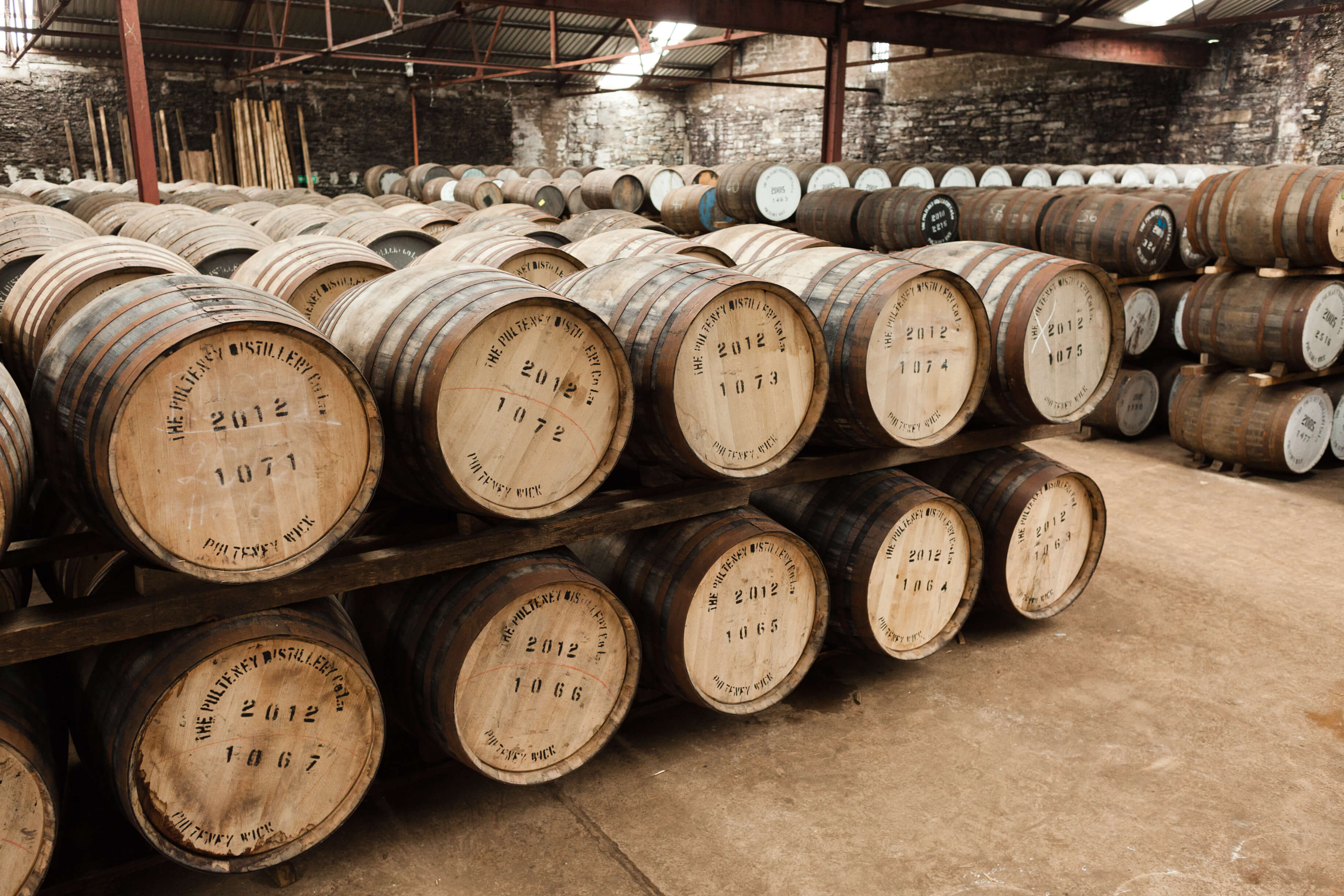Whisky Seasons
Should the time of year determine your choice of whisky?
Read more
Today we bring the second article in our two part quick-guide to the Whisky Cask.
Yesterday we talked a bit about why we use oak casks for maturing Old Pulteney Single Malt Scotch Whisky (and indeed why all the other distillers do it too). Whisky maturation process as we know it today was not an invention of one person but rather a progression of the way things were done in whisky-making countries, determined by what was available and what worked best at any given time.
Today we would like to explore something which translates more directly into what you can smell and taste in your glass – the types of casks we use, where they come from and how they help us create the Old Pulteney that you know and love.
Today over 90% of the 20 million casks of whisky maturing on Scottish soil have previously held American bourbon. But it wasn’t always like that. Historically many distillers used big wine and fortified wine casks from the continent to mature whisky.
In the very early days some new casks were used but the import from the continent meant there was a good supply of quality casks which could be bought at a relatively low price in comparison. Then the industrial revolution happened and the journey across the Atlantic became cheaper, quicker and safer. What’s more, the Americans decided that in order to support their logging and coopering industries they would ban local whiskey producers from re-filling their casks. The ‘unhygienic’ nature of the process was a feeble excuse but the law is the law and suddenly a great number of barely used American barrels became available to the Scottish distillers.
The industry seized the the opportunity and today a lot of the character we associate with Scotch comes from the American white oak. And it’s one of the great coincidences of history that the ex-bourbon casks work so tremendously well for Scotch; they complement the character of the Scottish distillate but because they’ve been seasoned, they don’t overpower it. A match made in heaven if we’ve ever seen one. And as for the bourbon, the intensely sugary and tannic virgin oak influence became its trademark and traditional American distillers wouldn’t re-fill their excellent barrels even if they could.
Today whisky makers rely heavily on three main types of casks.
• The ex-bourbon barrel is exactly what it says. A cask made to a barrel size (190-200 litres) in America; used for ageing American whiskey, usually for a couple of years, and then shipped to Scotland whole and re-filled. These casks tend to impart slightly spicy vanilla, white chocolate and coconut characteristics.
• The hogshead is another common type of cask. It’s usually built from bourbon barrel staves but to a slightly larger size (240-260 litres). Shipping staves rather than whole casks is much more cost-efficient.
• The ex-sherry butt is no longer the main maturation vessel of the whisky industry but still thousands of them are filled across Scotland every year. They are very large (500 litres) and give whisky more spicy and fruity character as well as a darker, ‘redder’ colour. It’s a common misconception that all butts are built from European oak. In fact many of them are built from white oak imported from America. Still, a good quality ex-sherry butt is an order of magnitude dearer than a fine bourbon barrel while a less favourable area of wood contact to volume of spirit ratio means that whisky in sherry butts may require slightly longer maturation to achieve full potential.
You may also come across quarters and octaves (very small casks), puncheons, pipes, barriques and more, but the three casks described above are the backbone of whisky maturation today and our bread and butter here at Pulteney. And even though other distillers use ex-wine casks, ex-beer casks and other interesting containers, our approach is more straightforward and we focus on what works best for Pulteney – great quality ex-bourbon and ex-sherry casks.
To visit our website, you must be of an age at which the purchase and consumption of alcohol is permitted according to the legislation in your country of residence.
If there are no laws on this matter, then you must be at least 18 years old.
Terms and ConditionsAlcohol abuse is dangerous to your health.
Drink Responsibly.